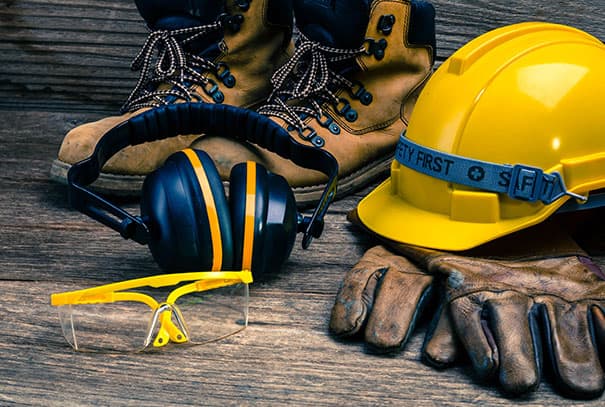
According to the annual Labour Force Survey (2016/2017) the UK construction industry reports an average of 64,000 non-fatal injuries each year. *1
Even with thorough risk assessments and the implementation of adequate controls, construction workers could still be subject to health and safety risks from hazards, which is why Personal Protective Equipment is so important.
Where required, wearing task-appropriate, well-fitted equipment can be the difference between life and death in the event of an accident.
However, a worrying trend which appears to be growing is the trade in counterfeit Personal Protective Equipment. Whilst some of the copies on the face of it, may appear genuine, unfortunately most of it is made with inferior materials and many items lack essential safety features, which may keep costs down, but do very little to protect the wearer.
Identifying Fake Personal Protection Equipment
Counterfeit PPE items can be easily purchased via online auction sites or from street markets and it is simple to buy containers of 'safety' equipment direct without the correct quality control procedures in place, can you be sure that you know what you are purchasing? Could this be putting lives at risk? If you find branded goods at well below their usual asking price, then perhaps this should alert you to look into it further before you buy.
Some key hints that PPE might be a fake are: 2
- Is the CE mark present on the product marking/labelling, and if so, is it in the correct font and at least 5mm high?
- For high risk products, including respirators and chemical protective clothing, is the CE mark accompanied by a 4-digit number? (e.g. CE 0120)
- Were written instructions for use provided within the product? Are the instructions for use printed in clear and legible text, and were they written in the language used in the manufacturer’s country of origin?
- Is the name and address of the manufacturer detailed on the user instructions?
- Does the certificate clearly contain the notified body’s name and number?
- Is the notified body from within the EU? There are a few non EU notified bodies and therefore caution should be taken.
- Does the certificate show signs of tampering i.e. differing fonts and sizes, colour changes etc?
- Does the certificate contain a date and notified body signature?
- Does the certificate have its terms and conditions included?
- Does the certificate show a clear description of the product, including model references, specifications, and test references?
- Does the certificate state that it is an EC type-examination certificate?
- Does the certificate include a manufacturer’s name and address?
- If a validity period is stated on the certificate, is it still current?
*1 http://www.hse.gov.uk/statistics/industry/construction/index.htm
*2 https://www.safesite.co.uk/blog/counterfeit-ppe-whats-the-risk 20 September 2017
Insurance Implications from Fake PPE
Existing Employment law requires you to provide a safe system of work for all employees and by implication that means that you must do a risk assessment for each task and ensure that you provide adequate protection against any of the risks you identify.

Whilst there might be very little argument about the injury caused, any lawyer acting on behalf of an injured employee would be perfectly entitled to investigate whether the use of inadequate PPE was the route cause of the injury, or whether it substantially contributed to it being worse than it would have been if genuine and adequate protection had been provided. At the very least, this could be a factor in an increased award, and there is of course the human emotional factor of knowing that by trying to save a little money and take a short cut, you have not properly protected your employees.
In the event of a serious breach, where the PPE completely fails to provide the required level of protection, there is also the potential of Directors and Officers of the company being brought into an action for their personal responsibility, which in the most severe of cases, could even be a Corporate Manslaughter issue.

We recommend that businesses fully understand what it is they are buying and set out very clear guidelines to their purchasing or procurement team, to ensure that they too understand that cheapest is not necessarily always the best.

